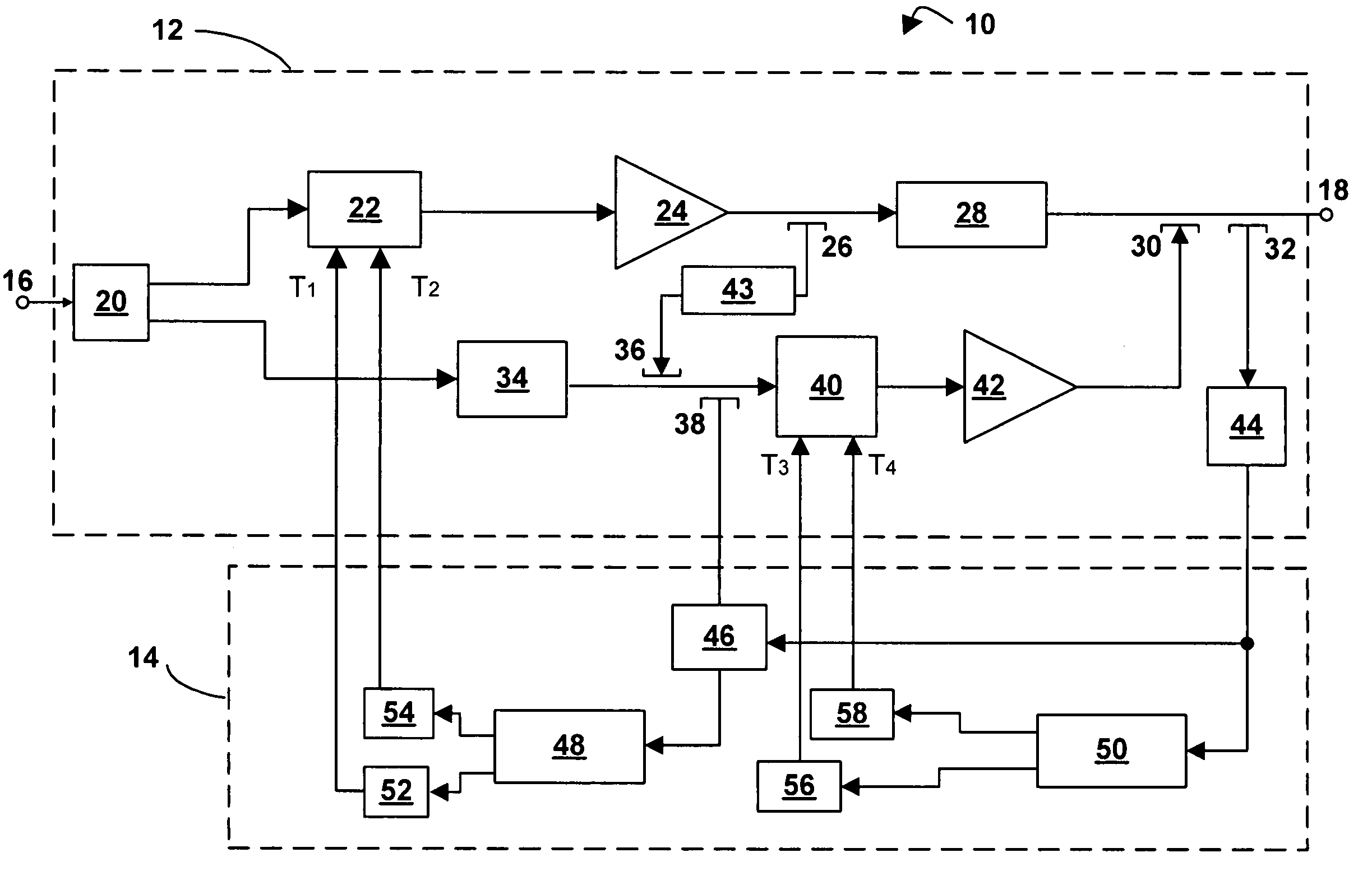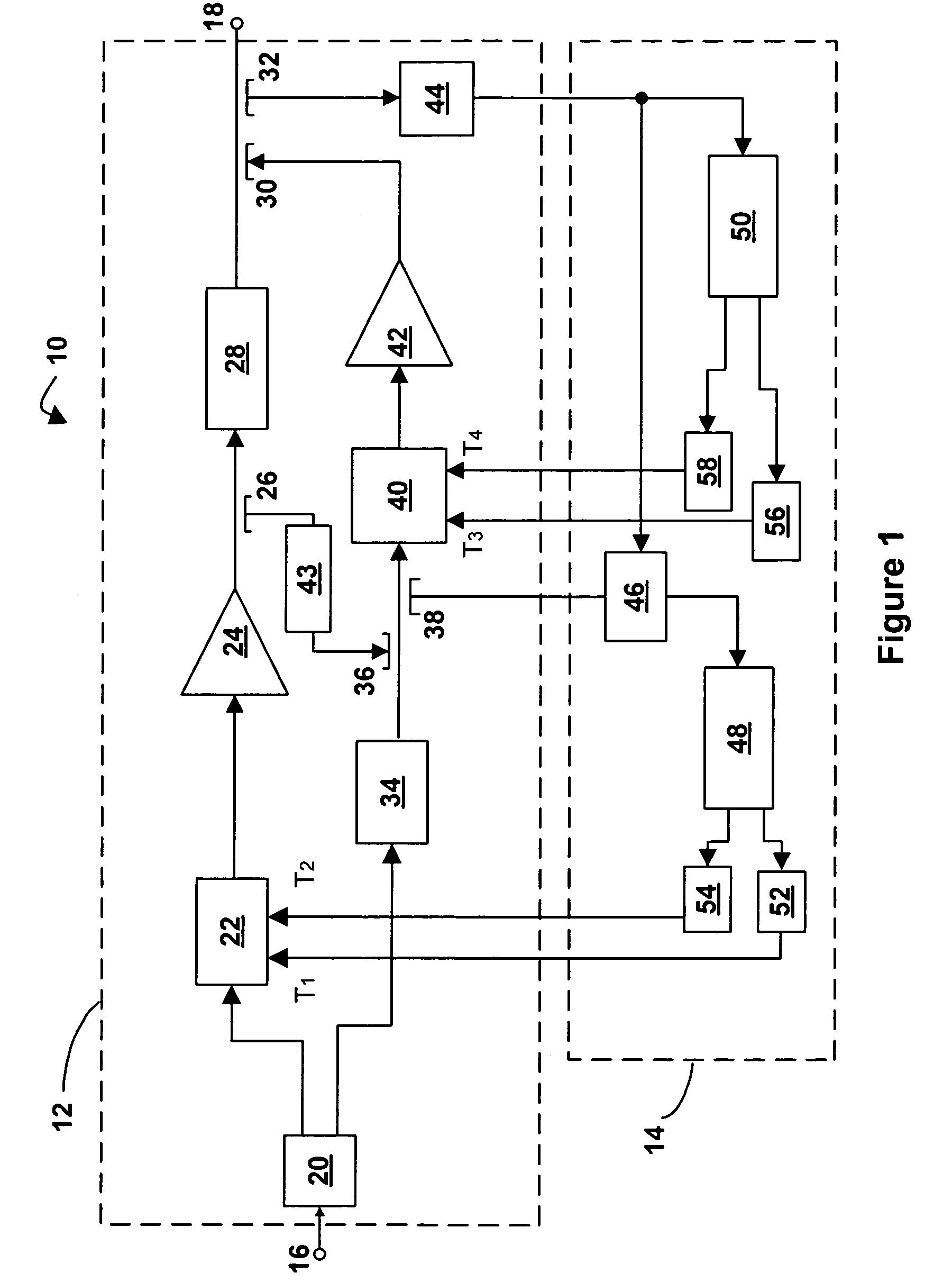Apparatus and method for controlling feed-forward amplifiers
a technology of amplifiers and amplifiers, applied in amplifiers, electrical equipment, amplifier modifications to reduce noise influence, etc., can solve the problems of signal cancellation loops that should first be nullled and not very useful, and achieve the effect of improving performance and maximising cancellation
- Summary
- Abstract
- Description
- Claims
- Application Information
AI Technical Summary
Benefits of technology
Problems solved by technology
Method used
Image
Examples
Embodiment Construction
[0020]Referring now to FIG. 1, a feed-forward amplifier in accordance with an embodiment of the invention is indicated generally by reference numeral 10. The feed-forward amplifier 10 comprises an amplifier portion 12 and a detector-controller portion 14.
[0021]The amplifier portion 12 has an input port 16 and an output port 18. A main signal path runs between the input port 16 and the output port 18 and consists of a series connection of a first main path splitter 20, a main signal path gain and phase adjuster 22, a main amplifier 24, a second main path splitter 26, a main signal path delay element 28, a first main path coupler 30, and a third main path splitter 32.
[0022]While one output of first main path splitter 20 continues along the main signal path, the other output of first main path splitter 20 heads along a feed-forward path consisting of a feed-forward signal path delay element 34, a feed-forward path coupler 36, a feed-forward path splitter 38, a feed-forward signal path ...
PUM
 Login to View More
Login to View More Abstract
Description
Claims
Application Information
 Login to View More
Login to View More - R&D
- Intellectual Property
- Life Sciences
- Materials
- Tech Scout
- Unparalleled Data Quality
- Higher Quality Content
- 60% Fewer Hallucinations
Browse by: Latest US Patents, China's latest patents, Technical Efficacy Thesaurus, Application Domain, Technology Topic, Popular Technical Reports.
© 2025 PatSnap. All rights reserved.Legal|Privacy policy|Modern Slavery Act Transparency Statement|Sitemap|About US| Contact US: help@patsnap.com


